From Baroque facades to pink quarry structures and golden chapels, Mexico is not short of Catholic architectural wonders. From the epic beauty of ancient Mayan ruins, to the charming streets of Oaxaca City, to the wonders of street food in its capital city, Mexico hosts a wealth of historical, cultural and religious tourism attractions that is hard to rival. For those interested in a religious-themed exploration of the second largest Catholic country in the world, here is a list of not-to-be-missed shrines.
1. Basilica of Our Lady of Guadalupe, Mexico City
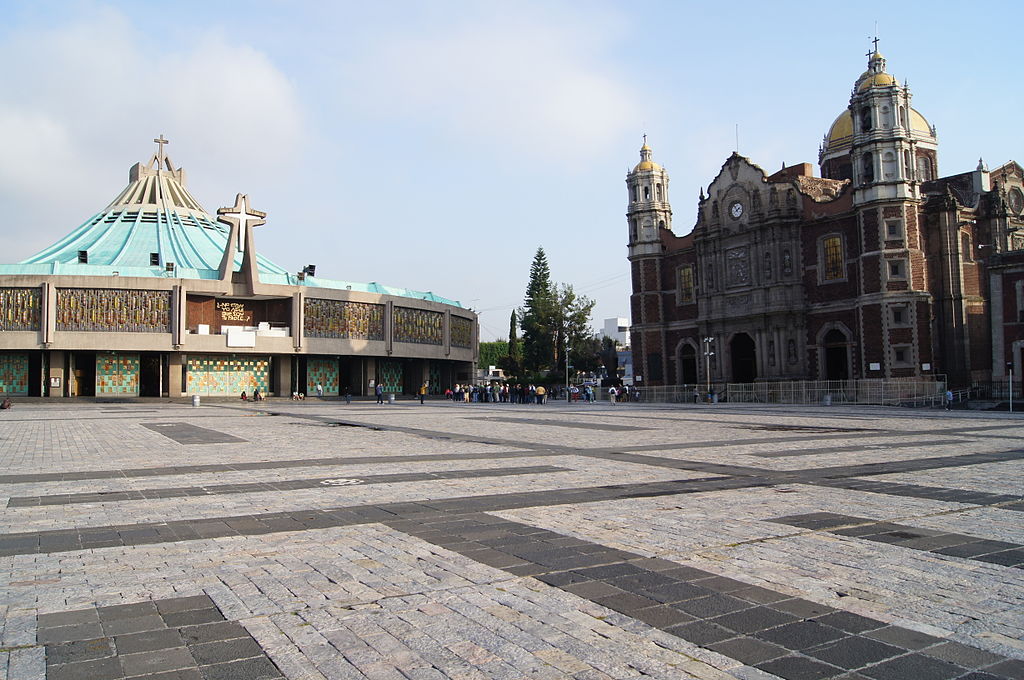
Built on top of Tepeyac Hill, in northern Mexico City, the world-famous Basilica of Our Lady of Guadalupe stands as one of Mexico’s official national shrines. Pilgrims have been flocking to the site since at least 1531, when according to a local story, the Virgin appeared in front of Juan Diego Cuauhtlatoatzin, an Aztec who converted to Christianity, to ask for a church to be built in her honor on the site of a former Aztec temple. A first structure was built in 1695, featuring Doric interiors and marble statues, by the then-archbishop Juan de Zumárraga, followed by later expansions and by an incorporation into a Basilica in 1754. But as the foundations of this original “older” Basilica started to sink, a “New Basilica” was built next to it in the 1970s. The iconic image of the “Queen of the Americas,” as Pope John Paul II called her, is currently held in this new Basilica, imprinted the the fibers of Juan Diego’s tilma, or cloak. Millions of visitors make it to this historical shrine each year, especially on Our Lady of Guadalupe’s feast day, December 12.
2. Church of Santo Domingo, Puebla
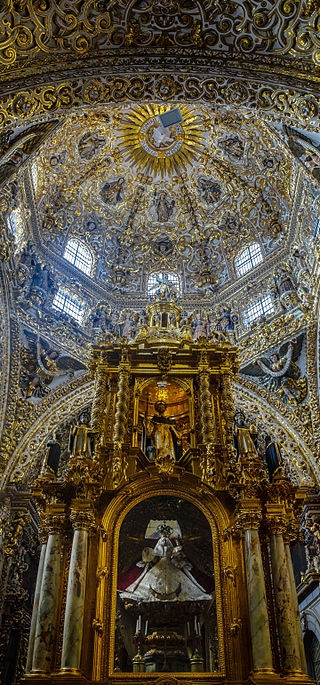
Dominicans friars first got to Mexico in 1526, and by 1534 a group of them had settled in Puebla, just south of Mexico City. A few years later, in 1571, they started to lay down the foundations of the Church of Santo Domingo, which was completed in 1611. Its sober facade, structured according to the purist style that was typical of early Spanish Renaissance architecture, should not deceive you. Upon entering the church you will come across one of the finest examples of Spanish Baroque: the Chapel of the Virgin of the Rosary. Built in 1650-1690, it features sumptuous decorations—telling the story of Jesus from birth to his debate with doctors at the Temple—made of marble, ceramic, and gold. It was because of its shimmering gold light that Brother Diego de Gorozpe named it “La Casa de Oro” (literally The House of Gold) and proposed it as the “Eighth Wonder of the World” when he visited in 1690.
3. Santa Prisca de Taxco, Taxco, Guerrero
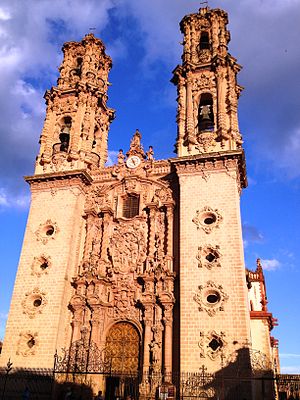
Built between 1751 and 1758, the “Parroquia de Santa Prisca y San Sebastían,” commonly known as Church of Santa Prisca, was constructed by order of José de la Borda, a local silver mine owner. Featuring a Latin cross design, it includes two twin towers decorated according to Churrigueresque style, and for a long time stood as Mexico’s tallest monument. Today, that designation belongs to the Church of Our Lady of Mount Carmel, but the Santa Prisca towers still constitute a towering landmark among the low buildings of Taxco’s old city. But part of its wonder lies in its interiors, housing nine altarpieces covered in gold, including the main one, dedicated to the church’s two patron saints, Santa Prisca and San Sebastian.
4. Cathedral of Zacatecas, Zacatecas
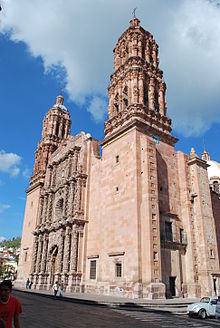
A lesser known but nevertheless beautiful shrine is found in Zacatecas, the capital of the eponymous State of Zacatecas in northwest Mexico. Built in 1729, the Cathedral of Our Lady of the Assumption of Zacatecas was constructed using the pink quarry stone typical of the area. Its richly decorated Baroque facade makes it one of the best preserved examples of Baroque door architecture in Mexico and earned it the title of UNESCO World Heritage site in 1993. As the various shades of pink of its quarry structure change according to sunlight, it is said that the best color is usually seen in the afternoon, between 2:30 and 6 p.m.
5. San Michael Church, Mexico City
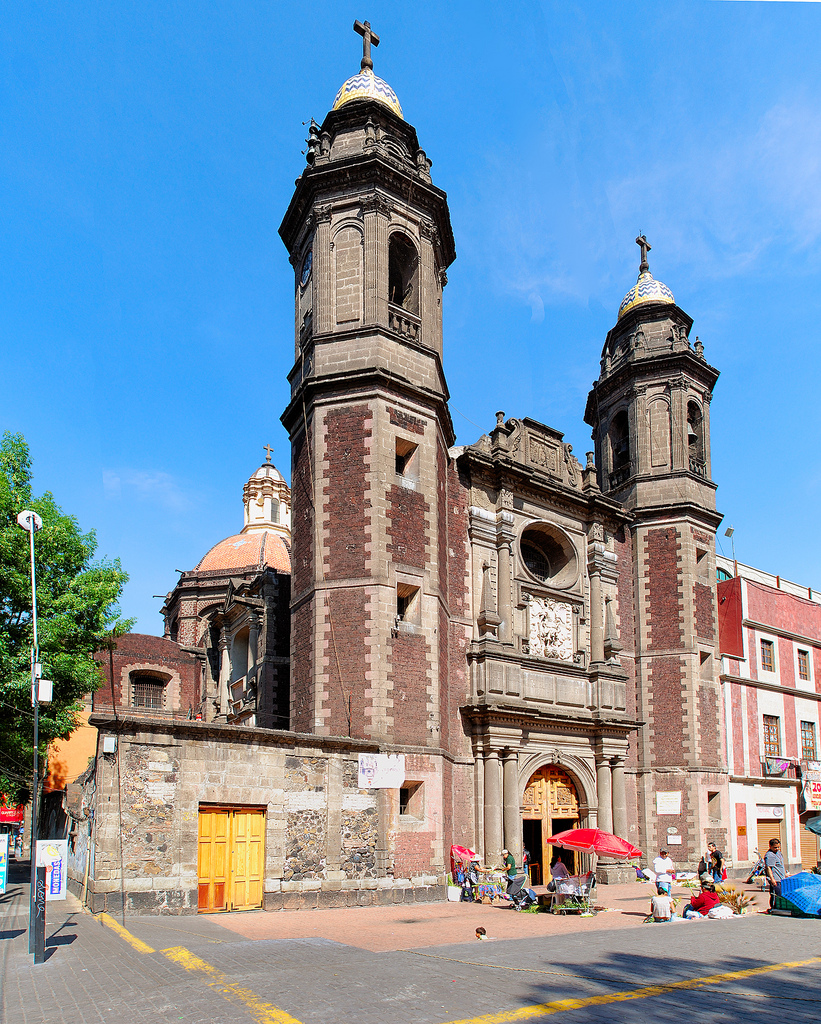
Located in the historic city center of Mexico City, this 17th-century architectural gem was designed by Spanish architect Pedro de Arrieta according to Spanish Baroque style. But its most iconic trait, the “cake-like” pinnacles of its roof, were added in the 19th century by local indigenous stonemason Zeferino Gutiérrez, who allegedly based his design on a photo he saw of a Belgian church. And for those interested in organic art, the chapel at the left of the main altar holds an image of the Cristo de la Conquista (Christ of the Conquest) made from orchid bulbs and corn stalks in the 16th century.








